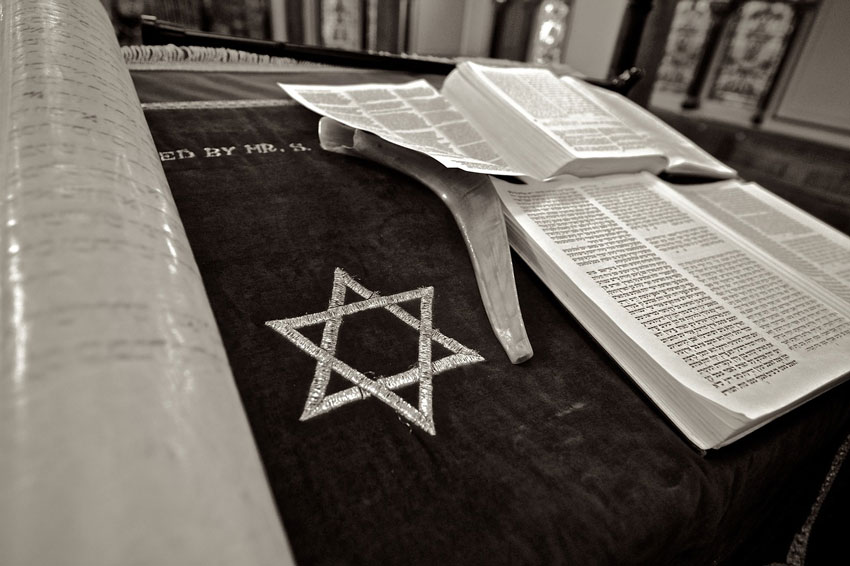7 Ways to Reclaim Your Jewish Heritage

Over the years, I have met many secular Jews longing to reclaim their Jewish heritage. They often recall a grandparent who was particularly observant while their parents tended more toward the secular. This has led them to become more secular themselves. In fact, they become fully immersed and integrated into a society that knows little of Jewish heritage beyond what is shown to them in movies and on television.
Nonetheless, many of these secularly-minded Jews experience some sort of awakening. They realize through reading or talking with others that they may be missing out on something. A feeling of being adrift or without roots is not uncommon. They start to wonder, “How can I reclaim my Jewish heritage?”
That sounds like a daunting task, but it doesn’t necessarily have to be. Think of reclaiming your heritage as being more of a journey than a destination. Throughout the years of your study and exploration, you become increasingly knowledgeable and more connected to your ancestors and the lives they led.
As all journeys must begin, this one starts with a single step.
1. Interview Your Oldest Jewish Relatives
The earlier generations of your family may have vivid memories of celebrations and observances from their childhood or their years as a young adult. Sit down and have an in-depth interview with them now so that you can capture those memories. Be sure to get at least an audio recording so the interview, or series of interviews, can be preserved for future generations. The more you know about your family’s personal observances and traditions, the more you’ll feel connected to your Jewish heritage.
2. Create a Family Tree
Resources like websites Jewishgen.org and Ancestry.com provide marvelous resources to anyone who wants to connect with their heritage. Using them is incredibly easy, as both websites have plenty of tutorials and “how to” pages. If you are traveling to Europe on a heritage expedition, then make a point of visiting the Jewish Genealogy & Family Heritage Center in Warsaw. You’ll find a vast treasure trove of records that may provide even more insight into your Jewish heritage.
3. Purchase a DNA/Ancestry Kit
Now that you’re familiar with the branches of your family tree, take it a step further by purchasing a DNA kit from 23andme.com. The ancestry service will reveal amazing things to you about your family. Often, you’ll discover a few surprises along the way. Of particular interest is the “Ancestry Composition” factor, which tells you from which of the 31 major population groups around the world your DNA derives.
4. Create a Multigenerational Family Photo Album
Photographs are precious, and they only become more so as the years go by. Unfortunately, as older family members pass away, the stories told by the images become blurry. Now is the perfect time to start a multigenerational family photo album that is complete with in-depth captions. Remember to record who is in each photograph, where and when it was taken and any special events or observations that were occurring. This will become a treasured family heirloom that provides you with a pictorial history of your Jewish heritage.
5. Learn Hebrew at an Ulpan in Israel
“Ulpan” is a Hebrew word for “instruction,” which makes it a fitting moniker for a place to learn Hebrew. Several of these institutes are found in Israel. Mainly, the programs offered are aimed at helping new immigrants integrate into Israeli society. Learning Hebrew is the main focus, but other classes touch on Israeli history and culture. When you immerse yourself in one of these courses, you may gain an entirely new perspective on your family history.
6. Learn Yiddish
Devote yourself to a summer of learning Yiddish at one of the many excellent language programs in New York. You can choose from programs at well-regarded institutions such as the Yivo Institute for Jewish Research, The Workmen’s Circle and the Yiddish Farm, which has particularly dynamic Yiddish-language immersion programming that is combined with Jewish education and sustainable farming. If you’d rather travel farther afield to find a Yiddish classroom, you’ll find similarly well-recommended programs at Tel Aviv, at the Vilnius Yiddish Institute in Lithuania or Lviv, Ukraine.
7. Become a Member of Your Local JCC
Jewish Community Centers are found in major cities across the U.S., with some of the largest cities boasting several different Centers. Each one is unique, but they all offer a wealth of educational, social and cultural services. You may attend lectures, observe or participate in theatrical performances or enjoy a few laps at an indoor pool. The offerings really are that diverse, and all the while, you’ll be associating with other Jewish community members who can enhance your understanding of and appreciation for your Jewish heritage.
